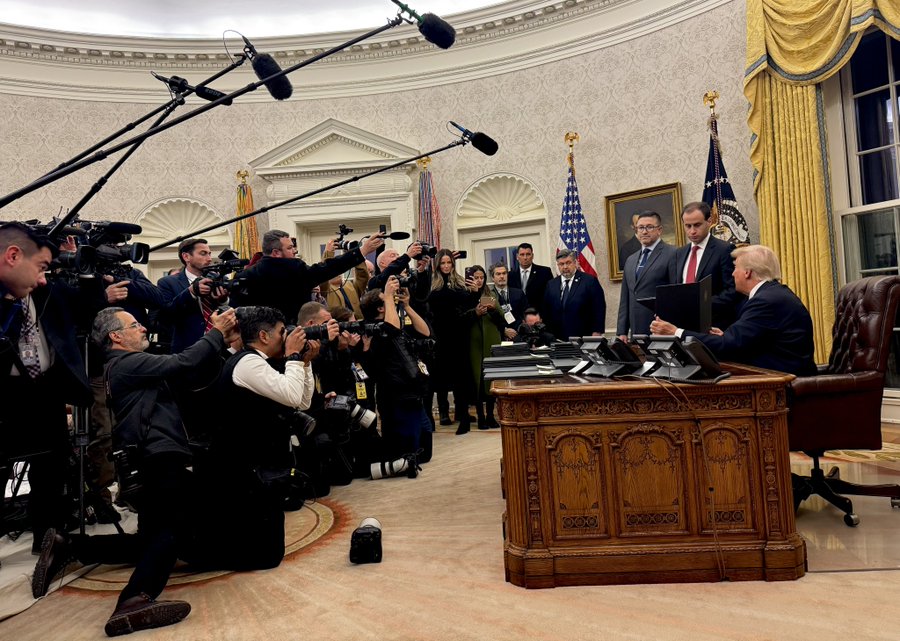


Today, President Donald J Trump signed an executive order triggering the first ever system of “reciprocal trade tariffs,” a seismic change in U.S. trade policy that will also consider the respective nation’s VAT (Value Added Tax) tariff.
Within the executive order [as outlined], the Secretary of Commerce and the United States Trade Representative will consider foreign industry subsidies, and non-monetary tariff barriers as part of the determination of the tariff levied. This is a stunning shift in U.S trade agreements that will cut through all the angles being deployed to avoid U.S. tariffs and block U.S exports into their country.
The policy will pressure foreign nations to lower their trade barriers to U.S. goods and eliminate disparity in foreign trade agreements. One big example will be the impact on the EU through the continuing Marshall Plan. The EU will now face reciprocal tariffs and no longer benefit from one-way tariff acceptance. There are obviously no tariffs on products made inside the USA.
With “reciprocal tariffs” the Commerce Dept and USTR will now determine the trade imbalances with each individual country and will evaluate each FTA (Free Trade Agreement), one-by-one to deconflict the trade imbalance. Direct tariffs, subsidies, regulatory hurdles, non-monetary trade barriers and hidden export subsidies will be addressed as part of the reciprocity evaluation. This is a completely new dynamic in the era of modern global trade and economics.
During the executive order signing event, President Trump took questions from the media. WATCH:
Between now and April 1st, each individual trade agreement will be evaluated with consideration for all facets of the cost for American companies to export to the evaluated nation. Direct tariffs, Value Added Taxes (VAT), state subsidies and non-monetary regulatory tariff barriers, will be determined for each nation. That nation will then be made aware of the tariff against each sector within their export system to the United States.
Effective April 2, 2025, President Trump will then have the tariff data provided by the USTR and Secretary of Commerce. President Trump will determine when the reciprocal tariff will be triggered and will likely engage in discussions with the leaders of the foreign nations.
These fireside chat-style impromptu pressers during executive order signings are awesome. The revolutionary change in government transparency and communication is, well, quite literally historic and stunning. The media can ask questions in real-time as the specific policy is implemented and explained, while simultaneously the ability of the media to shape an anti-Trump policy narrative is removed.
